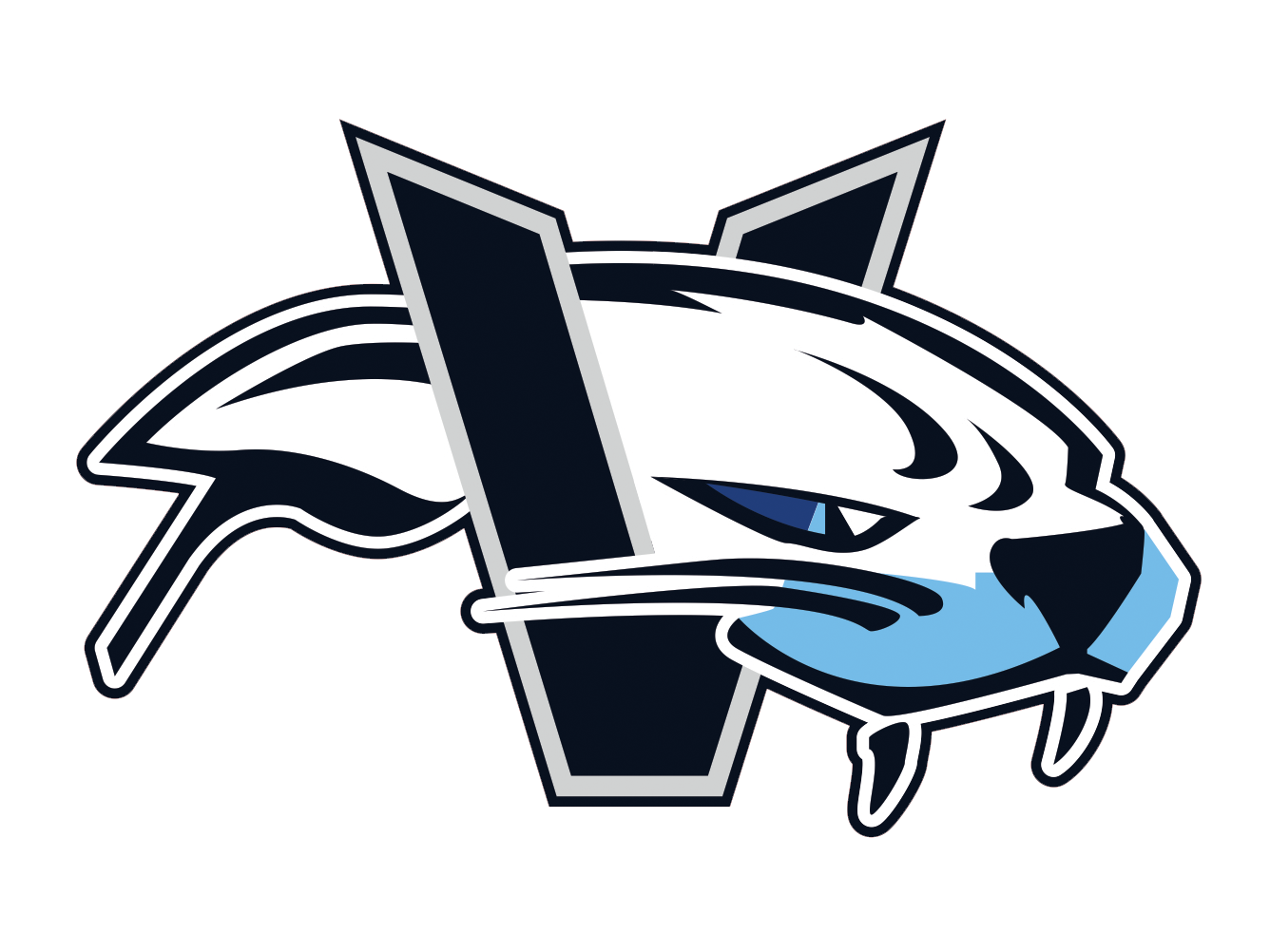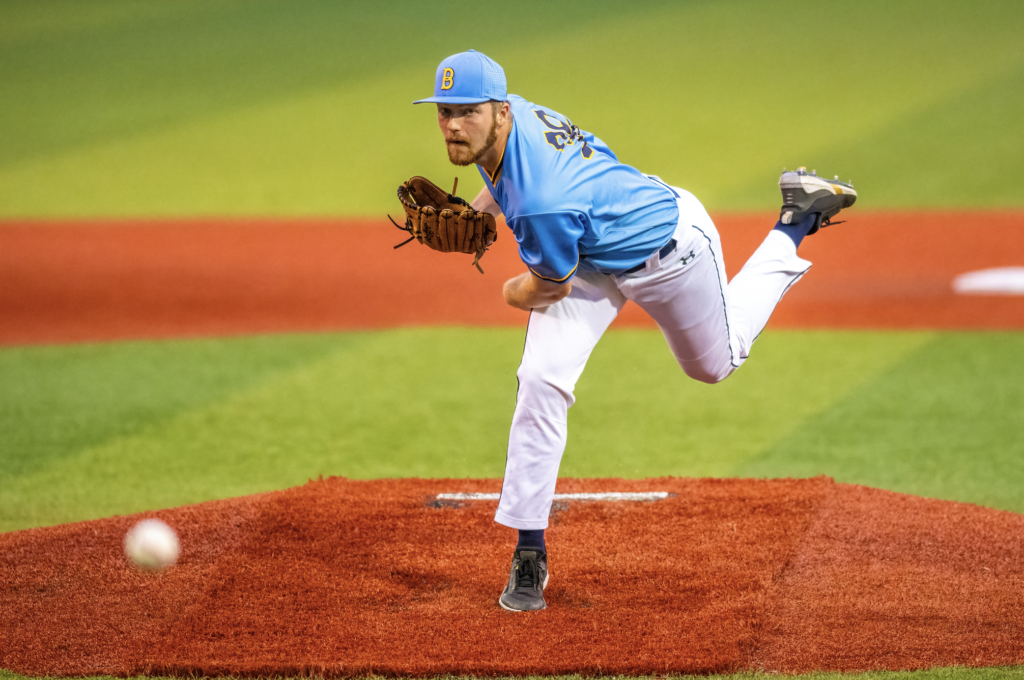If you were watching the Bells’ series against the Drifters closely, you may have been confused when you saw their first baseman on the mound to close out game three. That confusion likely turned into awe as he struck out four of the six batters he faced to give the Bells the series win.
Cameron Dayton, coming to the Bells from the University of Texas, has a unique skill set that only a select few prospects at this stage in their careers have: the ability to hit and pitch. Going back to Dayton’s roots as a ball player, he started off playing first base before his dad, who pitched in men’s leagues at the time, gave him a crash course in throwing from the mound. Despite focusing on it from an early age, his talent at each position didn’t come immediately for Dayton.
“I sucked when I was three years old,” Dayton said with a grin on his face. “I was the kid that couldn’t get it off the tee, the kid that was doing happy feet in the outfield when the ball was going by, my parents in the stands going ‘Oh my god, this kid’s not going to play baseball.’”
It wasn’t until Dayton noticed his friends, who were skilled baseball players at their young age, that he thought about taking his commitment to the sport seriously.
“I couldn’t stand it, so I was like ‘You know what, I think it’s time to actually start putting in some work,’” Dayton said.
Dayton credits his parents, who both played the sport as he was growing up, with helping him get the work he needed to develop his skills. Eventually, his positional versatility made him an attractive prospect for many coaches, who saw a golden opportunity to fill two roster spots with one player.
Bells coach Adam Geaslen has been more than excited to have Dayton at his disposal.
“Left-handed power bat, left-handed first baseman, and can go on the mound and fill up the strike zone with a really good slider, so it just gives you, in one player, multiple options which you don’t have up and down the roster,” Geaslen said.
The power makes Dayton an ideal cleanup hitter, like he was utilized as in the first two games against the Springfield Drifters, hitting a single with two walks over both games. Coach Geaslen envisions a similar use of his skills throughout the season.
“He’ll go position player, or possibly DH, the first two of the series, and then he’ll be hot out of the pen in game three. That way we’re protecting the arm, making sure we’re not utilizing the legs too much,” Geaslen said.
Saving Dayton’s arm is important for Geaslen and the rest of the coaching staff to keep in mind. They aim to limit his pitch count to under 40 to start the summer, with the expectation that it grows to 50-60 as the season extends.
“With two-way players, you just have to make sure that they’re not doing too much throwing on their non-pitch days, so it’s something that we manage, but it’s not difficult to do, it’s just constant communication between myself and my pitching coach,” Geaslen said.
The role of being a dual-threat comes with extra work, according to Dayton. Splitting time between pitching and hitting can cause extra hours of practice, which inevitably becomes difficult for a full-time college student.
Being the two-way player he is, Dayton also relies on the increased communication previously mentioned by Coach Geaslen. Determining which group he practices with and setting delicate pitch counts is important information to relay, and Dayton has been happy with the level of communication he’s had with the coaching staff here with the Bells. It’s not always as easy as it is here though, according to Dayton, when some teams have informed him of a last-minute switch to pitching before a game.
“There have been times where it’s been a little more of a question, but I’ve just been trying to roll with the punches as best as possible,” Dayton said.
Despite the extra work, Dayton draws advantages from his positional flexibility. Having experience on the pitching mound gives him added insight as a batter, being able to identify patterns or sequences that the opponent may use, as Dayton describes.
“It’s both getting in the mind of a pitcher, and then also being able to dive into the mechanics of a pitcher. One of the things you can do is, from a mentality standpoint, you can sit there and think, ‘Ok, this is a really good curveball count, I’m probably going to sit a little later on the fastball to try and get to that curveball if it’s going to come, and allows you to get to the curveball if it’s thrown,’” Dayton noted.
“From a mechanics standpoint, it’s one of those things where it’s like ‘Ok, I’m seeing this guy, he’s kind of flying open and that means his tendency is going to be to miss the fastball up and out, so I’m going to look for that miss up there and try and stay off of that pitch, look for something where he gets it down in the zone a little more.”
Dayton relishes the opportunity to keep his multi-positional eligibility going into the future. The long hours he puts in in the cages and the bullpen aren’t for nothing, as the edge he gets from his expansive knowledge of both batter and pitcher goes a long way.
“My whole philosophy on it is, I’m going to do it until someone tells me I need to go one way or the other and so far I’ve been fortunate enough I haven’t had to make that decision yet.”
Written by Jason Upton, Bells Beat Writer.















